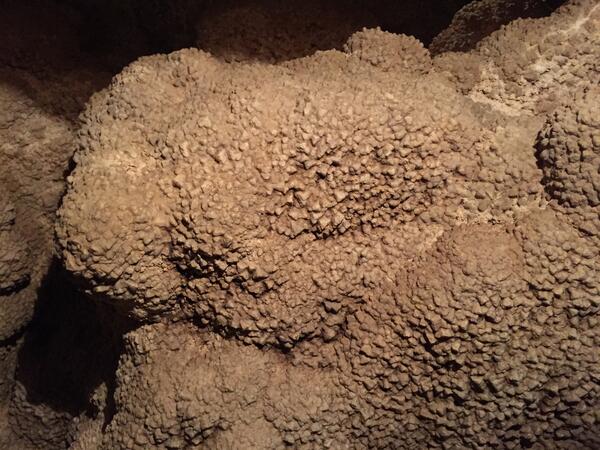Jewel Cave is currently the 3rd most extensive cave network in the world. It is believed to have formed completely underwater, thus leading to the extensive coating of calcite crystals.
In the center of the image, a formation known as cave bacon can be seen.






















